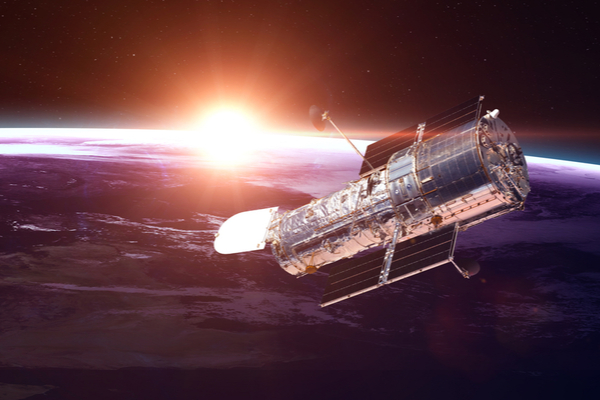During its 35 years of orbiting the Earth, the Hubble Space Telescope has transmitted endless streams of magnificent images, confirmed the existence of “dark matter,” and helped track a vagabond black hole moving through the Milky Way.
As USA Today reports, to celebrate the Hubble telescope’s 35th anniversary, NASA released some striking new images on last week, including a bold rendition of Mars and a stunning photo of a moth-shaped nebula with a white dwarf star in the middle.
Built by Lockheed Martin in Sunnyvale, California, the Hubble Space Telescope was launched on the space shuttle Discovery from Kennedy Space Center in Florida on April 24, 1990. Since it orbits above the Earth, it can capture better cosmic images than telescopes on the ground.
Hubble has made more than 1.6 million observations over the course of its lifetime, NASA says. And Hubble’s discoveries have spawned more than 21,000 peer-reviewed science papers.
The James Webb Space Telescope, which orbits the sun, has captured much space news attention, but it certainly hasn’t put Hubble out of business.
What is the Hubble Space Telescope?
The Hubble telescope was designed to be the first space-based observatory, which could be serviced and upgraded while it remained in orbit.
It was named after Edwin Hubble, the astronomer who showed that other galaxies existed beyond our own and came up with a classification scheme distinguishing galaxies by shape.
About the same size as a school bus, the Hubble telescope uses three types of instruments to capture images across the universe:
- Cameras: Hubble has two cameras – the Advanced Camera for Surveys (ACS), which is primarily used for visible-light imaging, according to NASA. The Wide Field Camera 3 (WFC3) views infrared and ultraviolet wavelengths for higher resolution, deeper images. The ACS was repaired and the WFC3 was installed during a May 2009 servicing mission involving five spacewalks by astronauts from the space shuttle Atlantis.
- Spectrographs: The Cosmic Origins Spectrograph is the most sensitive ultraviolet spectrograph ever, capturing light and breaking it down to assess temperature, density, chemical composition, and velocity of objects, such as stars and quasars. The Space Telescope Imaging Spectrograph, also repaired in 2009, captures many forms of light, including ultraviolet to near-infrared light.
- Interferometers: The telescope has three Fine Guidance Sensors used to target and measure the relative positions and brightness of stars.
—
Photo Credit: Vadim Sadovski / Shutterstock.com
